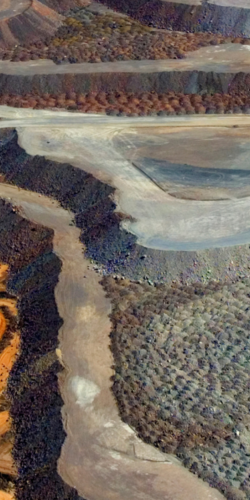What is CCS?
Carbon capture, utilisation, and storage (CCUS or CCS) is one of the technologies that can help reduce our carbon dioxide (CO2) emissions into the atmosphere. Technologies such as renewable energy, improved energy efficiency, and fuel switching aim to prevent the creation of CO2 emissions. CCS complements these technologies by addressing emissions that currently cannot be avoided, such as CO2 emissions from industrial processes like steel or cement manufacturing.
About a sixth of Australia’s emissions come from industries including cement, steel, and aluminum. These industries can still produce some CO2 as an inherent part of the production process, even when they are using zero-emission energy sources. Unlike the power sector, these industries do not currently have the same range of decarbonising options (for example, using renewables). However, CCUS is one option that is often compatible and can be applied, either directly or indirectly, to these hard-to-abate industries to reach net zero.
What is happening with CCS internationally?
The global pipeline of CCS projects currently stands at 41 projects in operation, 26 under construction, and 325 in development (advanced and early stage), according to the Global Carbon Capture and Storage Institute (GCCSI). Spurred on by greater investment and enabling regulatory mechanisms, the research, deployment, and expansion of this pipeline are undergoing rapid growth. The GCCSI notes CO2 capture capacity of CCS facilities under development has jumped 48 percent in the last 12 months.
The US, UK, Canada, and other nations have announced additional funding support for CCUS development. The US support is largely through its Inflation Reduction Act. This legislation includes unprecedented financial support for clean energy and climate change initiatives, with specific allocation to CCUS.
The European Union has set CO2 injection targets and streamlined the procedures for securing CCUS permits. And this year, Indonesia established a legal and regulatory framework for CCUS projects.
What are the opportunities for Australia?
Australia has several comparative advantages when it comes to CCS development. Australia’s geology, landmass, existing infrastructure, and potential for cheap, renewable energy resources all offer opportunities for domestic and international CO2 transport, storage, and utilisation.
There are currently 18 CCS projects at various stages of progress in Australia (including two test facilities), with current planned projects forecast to sequester 20 million tonnes of CO2 a year by 2035. The number and scale of these planned projects indicate the growing interest in CCS as an essential component for global decarbonisation.
In addition to storing domestically captured CO2, the large stable land in Australia means there is potential to import and store CO2 from other countries less able to rapidly reduce their emissions. This could help to reduce global emissions, maintain revenue from geological resources, develop new markets for CO2 sequestration, and address the indirect CO2 emissions generated by countries using Australian-sourced energy supplies - known as scope 3 emissions.
For example, Australia supplies more than 40 per cent of Japan’s liquefied natural gas, which generates CO2 emissions when combusted for electricity generation. Japan has limited CO2 storage potential. However, if emissions are captured locally and exported for storage, it could see our nation compete for and participate in a new market for international transfer and storage of CO2.
Ultimately, this will help support global efforts toward 2050 emission goals along with the number of employment opportunities locally in Australia.
.jpg)
.png)
.png)
.png)
.jpg)
.jpg)
.jpg)
.jpg)
.jpg)
.jpg)

.jpg)

%20(Billboard%20Web%20Ad)%20(Website)%20(2000%20x%20650%20px)%20(2).jpg)
%20(Billboard%20Web%20Ad)%20(Website)%20(2000%20x%20650%20px).jpg)
%20(Billboard%20Web%20Ad)%20(Website).jpg)
%20(Billboard%20Web%20Ad)%20(Website)%20(1).jpg)
%20(Billboard%20Web%20Ad)%20(4).jpg)
%20(Billboard%20Web%20Ad)%20(5).jpg)
%20(Billboard%20Web%20Ad)%20(5).png)
%20(Billboard%20Web%20Ad)%20(2000%20x%201000%20px).jpg)